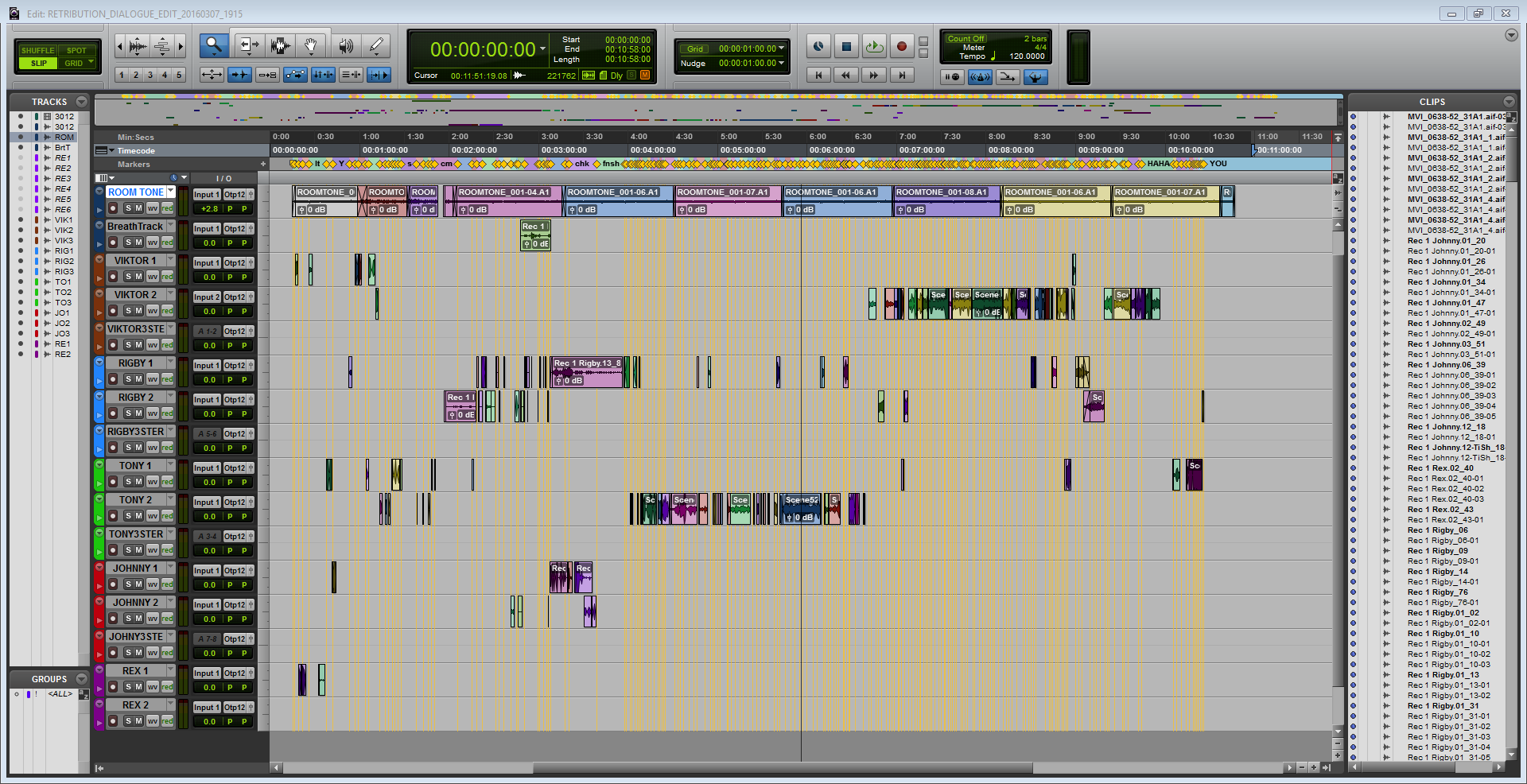For the past week I have been working on a dialogue edit for a film and thought I would share my experience working with dialogue in film. Before I started to do the edit I first wanted to research what I am getting myself into. Taking information from Dialogue Editing for Motion Pictures by John Purcell, dialogue editing is described as "Removing the film making from film." this is due to the fact you are removing sounds from the film set so the viewer can focus on what is being said by the talents. Before you even start to the dialogue edit you must watch through the film copy provided by your client so you can take notes about what you have to start doing. You also have to manage your time of work before you start to do the dialogue edit because you never want to spend too long working on the same project because mistakes will be made after long periods of working. This also leads to the days of working where it is best to space the days you are working with the dialogue because as mentioned before, too much time on one project can lead to problems. It is best to work in a quiet environment when working with dialogue. This is because you need to make sure you can hear everything that is going on in the edit you are working with. If you have background noise whilst you are working, you will not be able to grab the frequencies that show the most in the audio.
The next step that you can do is to sync the OMF or AAF files you get from the client for you to work with. This is so you know what to expect to work with when it comes to finding the best takes. These file types contain the scenes and shots of what were used for the video edit and it is the dialogue editors' job to find these sections and find the best audio takes. If there is no hope for the scene, ADR is usually the best result. However this is sometimes frowned upon because of the costs of bringing in the talents and studio hiring. It is also best for when you are doing the dialogue edit to work with a session template so you can easily organise your work and easily figure out where to put the audio for certain characters, scenes and shots.
With some research done I felt like I was then ready to start the joys of dialogue editing. To start I synced the AAF file received with the clients film and spotted the dialogue within Pro Tools using markers. This personally made the job of finding scenes that bit simpler. However the naming conventions used on each take did not match the scenes that were shown in the AAF import. I found out later from the director that they improvised most shots to try out different takes for the feel of the scenes. This made finding the best take a bit of a challenge. To make the job of searching through 200GB of audio, I used the workspace window in Pro Tools to help search through the final scenes of the whole production audio because I am working with the final scenes of the production. This then expanded into searching for plenty of parts of ADR for shots that could not be replaced with set audio and for noise reduction plugins to come in and help with eliminating background noise in the set audio. The noise reduction plugins I used were created by Izotope, and in many cases during the edit, the plugins provided were a God send as this helped with so many times that audio clipped, crackled or just had too much noise, but the take was too good to lose. With the amount of times that these plugins saved the audio I would recommend Izotope to anyone who works with audio.
I spread my days out working with the dialogue and made sure I did not exhaust myself and took up to 2 weeks to complete the dialogue edit which totalled up to 10 minutes of dialogue. Below you can see a final example of what the session looked like after the process of editing.



No comments:
Post a Comment